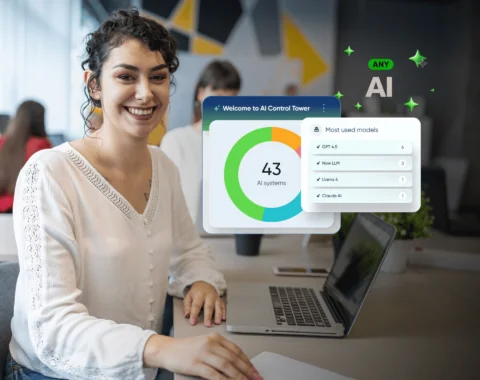Align and manage connected, interrelated, and dependent projects, programs, and programs with ServiceNow Project Portfolio Management (PPM). It is a process used by project managers and project management organizations (PMOs).

Project Portfolio Management
Project Portfolio Management (PPM) is a strategic approach to managing an organization’s projects by evaluating and prioritizing them based on their alignment with the organization’s strategic goals, available resources, and potential benefits. It is typically performed by a dedicated project management office (PMO) or a portfolio management team that oversees the organization’s project portfolio.
As necessary to ensure they remain aligned with the organization’s goals, PPM involves:
- Selecting the right projects.
- Monitoring their progress.
- Making adjustments
Project Portfolio Management (PPM) Key Benefits
Strategic alignment
PPM ensures that the organization’s projects are aligned with its strategic goals and objectives.
Resource optimization
PPM helps organizations allocate resources effectively so that the right projects get the right resources at the right time.
Risk management
PPM enables organizations to manage risks at the portfolio level, which allows for a more proactive approach to risk mitigation.
Improved decision-making
PPM provides decision-makers with the data to decide which projects to pursue and how to allocate resources
Increased transparency
PPM provides visibility into project performance, allowing better stakeholder communication and collaboration.
Project portfolio management Process
Define the portfolio strategy
Evaluate and select projects
Prioritize projects
Define the portfolio strategy
Allocate resources
What does Project Portfolio Management include?
Project Portfolio Management (PPM) typically includes the following key activities:
Portfolio Strategy
Establishing the organization’s portfolio strategy, goals, and objectives and prioritizing projects based on their alignment with its strategic goals and objectives.
Project Selection
Evaluating and selecting the most promising projects based on factors with the organization’s strategic goals. For example, their potential impact, available resources, and alignment
Resource Allocation
Allocating resources, including people, time, and money, to projects in the portfolio while ensuring that there are sufficient resources to support all projects.
Performance Monitoring
Monitoring the performance of each project in the portfolio, including tracking project progress, costs, and benefits and taking corrective actions as necessary.
Risk Management
Identifying and managing risks at the portfolio level, including assessing project risks, developing risk mitigation plans, and ensuring that the portfolio is balanced and diversified.
Communication and Reporting
Communicating project portfolio status, performance, and issues to stakeholders, including senior management, project sponsors, and project teams.
Continuous Improvement
Continuously review and improve the PPM process, refine the portfolio strategy, optimize resource allocation, and improve project selection and performance monitoring.
Portfolio Optimization
Continuously assessing and optimizing the portfolio to maximize the value delivered to the organization to achieve its strategic objectives, maximize investment returns, and ensure allocated resources effectively.
How Can Aelum Consulting Help with ServiceNow Project Portfolio Management?
Aelum Consulting can provide several services to help with ServiceNow Project Portfolio Management (PPM) initiatives. Here are a few examples:
ServiceNow PPM Implementation:
We can help organizations implement ServiceNow PPM to help streamline project management processes. It includes configuring and customizing the platform to meet the organization’s needs.
ServiceNow PPM Optimization:
Our experts can optimize an existing PPM implementation to ensure it is used to its fullest potential. It includes reviewing current processes, identifying improvement areas, and making optimization recommendations.
ServiceNow PPM Integration:
Our experts can help integrate ServiceNow PPM with other systems, such as financial management or resource management tools, to ensure that all data is centralized and accurate.
ServiceNow PPM Training:
We can provide training and support to help organizations get the most out of their ServiceNow PPM. It includes training end-users on how to use the platform effectively and providing ongoing support.
ServiceNow PPM Consulting:
Aelum Consulting can provide consulting services to help organizations with any aspect of their ServiceNow PPM implementation, from planning and strategy to ongoing support and optimization.
ServiceNow PPM Reporting and Analytics:
We can help develop custom reports and dashboards in PPM to provide real-time visibility. It includes developing key performance indicators (KPIs) and metrics to track project progress and identify improvement areas.
ServiceNow PPM Roles
Project Manager:
Responsible for planning, execution, & monitoring of projects. They define project scope, develop and maintain plans, manage risks, and ensure projects are delivered on time & within scope and budget.
Program Manager:
Responsible for managing a group of related projects to achieve strategic objectives. They oversee the work of project managers and ensure alignment with the overall program goals.
Portfolio Manager:
Responsible for managing the organization’s portfolio, selecting & prioritizing projects, and allocating resources across projects. They ensure that project selection is aligned with strategic goals and objectives.
Resource Manager:
Responsible for managing the allocation of resources across projects. They ensure that resources are available to support projects and are used effectively and efficiently.
Team Member:
Responsible for performing assigned tasks within a project or program. They provide updates on their progress and communicate any issues or risks to the project manager or program manager.
Stakeholder:
Someone interested in the project or program and who may be impacted by its outcome. They are typically involved in project reviews, provide feedback, and are informed of project status and issues.
Frequently Asked Questions
- Project Portfolio Strategy: ServiceNow PPM enables organizations to define and align their project portfolio strategy with their overall business strategy. It provides tools for establishing portfolio goals, objectives, and criteria for selecting and prioritizing projects.
- Project Selection: ServiceNow PPM offers a collaborative and standardized approach for evaluating and selecting the most promising projects to pursue. It provides a comprehensive set of tools for analyzing project proposals, assessing risks and benefits, and making informed decisions.
- Resource Allocation: ServiceNow PPM allows organizations to allocate resources, including people, time, and money, to projects in a centralized manner. It provides a clear view of resource availability and capacity, enabling organizations to balance resources effectively across projects.
- Performance Monitoring: ServiceNow PPM offers real-time visibility into project performance, providing a comprehensive set of tools for tracking progress, costs, benefits, and risks. It enables project teams to monitor project status, identify issues and risks, and take corrective actions as necessary.
- Reporting and Analytics: ServiceNow PPM provides a wide range of reporting and analytics tools, allowing organizations to track key performance indicators, identify trends, and make data-driven decisions.
- Integration with other ServiceNow modules: ServiceNow PPM is fully integrated with other ServiceNow modules, such as IT Service Management, which enables organizations to manage projects holistically, integrating project management and IT service delivery.
Here is a tabular summary of the main differences between project portfolio management (PPM) and project management (PM):
| Criteria | project portfolio management (PPM) | Project Management (PM) |
| Scope | Manages multiple projects as a portfolio to achieve strategic objectives | Manages a single project to achieve specific goals and objectives |
| Focus | Strategic and holistic, focuses on portfolio optimization and alignment with organizational goals | Tactical and operational, focuses on execution and delivery of the project |
| Goals | Maximizing the organization’s return on investment | Delivering the project on time, within budget, and to required quality standards |
| Planning | Long-term planning, involves evaluating and selecting projects, prioritizing projects, allocating resources, and monitoring the performance of the project portfolio | Short-term planning, involves defining project scope, creating schedules, and identifying tasks, risks, and issues |
| Resources | Manages resources across the project portfolio to ensure optimal resource allocation and utilization | Manages resources within the project to ensure successful completion of tasks |
| Reporting | Provides a comprehensive view of project performance across the portfolio | Provides detailed reports on project status, issues, risks, and progress |
| KPIs | ROI, net present value, strategic alignment, resource utilization | Schedule variance, cost variance, quality, scope |
| Integration | Integrates with other management systems such as IT service management | Can be integrated with other management systems such as enterprise resource planning |
Here is a tabular summary of the main differences between ServiceNow Project Portfolio Management (PPM) and ServiceNow Project Management (SPM):
| Criteria | ServiceNow Project Portfolio Management (PPM) | ServiceNow Project Management (SPM) |
| Scope | Manages a portfolio of projects to achieve strategic objectives | Manages a single project to achieve specific goals and objectives. |
| Focus. | Strategic and holistic, focusing on portfolio optimization and alignment with organizational goals. | Tactical and operational focuses on the execution and delivery of the project. |
| Goals | Maximizing the organization’s return on investment | Delivering the project on time, within budget, and to required quality standards |
| Planning | Long-term planning involves evaluating and selecting projects, prioritizing projects, allocating resources, and monitoring the performance of the project portfolio | Short-term planning involves defining project scope, creating schedules, and identifying tasks, risks, and issues. |
| Resource Management | Manages resources across the project portfolio to ensure optimal resource allocation and utilization. | Manages resources within the project to ensure the successful completion of tasks. |
| Reporting | Provides a comprehensive view of project performance across the portfolio. | Provides detailed reports on project status, issues, risks, and progress. |
| KPIs | ROI, net present value, strategic alignment, resource utilization | Schedule variance, cost variance, quality, scope |
| Integration | Integrates with other management systems, such as IT service management. | It can be integrated with other management systems, such as enterprise resource planning. |
| Features | Support project scoring and prioritization, what-if analysis, resource capacity planning, financial planning and management, and demand management. | Supports project planning, scheduling, task management, risk management, issue management, and change management. |
| Use Cases. | Used for managing multiple projects, optimizing project portfolios, and aligning projects with organizational goals. | Used for managing individual projects, tracking progress, identifying and mitigating risks, and ensuring project success. |
Our Clients

































































